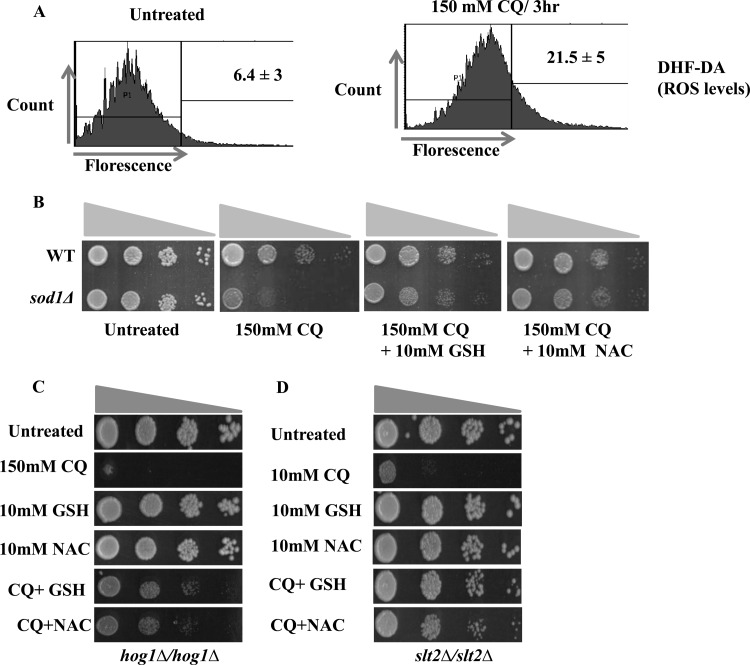FIG 7.
CQ treatment increases reactive oxygen species production in S. cerevisiae cells. (A) A yeast wild-type strain was grown in SC media until the exponential phase. Cells were treated with a 150 mM concentration of CQ for 3 h. The cells were then stained with DCF-DA and examined by FACS analysis as described in Materials and Methods. (B) Growth assay. Wild-type and sod1Δ strains were grown to the log phase. A 3-μl volume of each undiluted and 10-fold serially diluted culture was spotted onto control SCA plates, SCA plates containing 150 mM CQ, and SCA plates impregnated with a combination of 150 mM CQ and 10 mM-GSH or 10 mM NAC. All plates were incubated at 30°C for 72 h and photographed. (C and D) Spot test of hog1Δ (C) or slt2Δ (D) mutants on SC agar plates supplemented with either NAC (10 mM) or GSH (10 mM) or plates containing the indicated concentration of CQ with either NAC or GSH. Yeast saturated cultures were serially diluted (10−1, 10−2, 10−3, and 10−4) in 1.0 ml of sterile double-distilled water and spotted onto the plates. Cells were cultured at 30°C for 48 h, and pictures were taken using an HP scanner.

